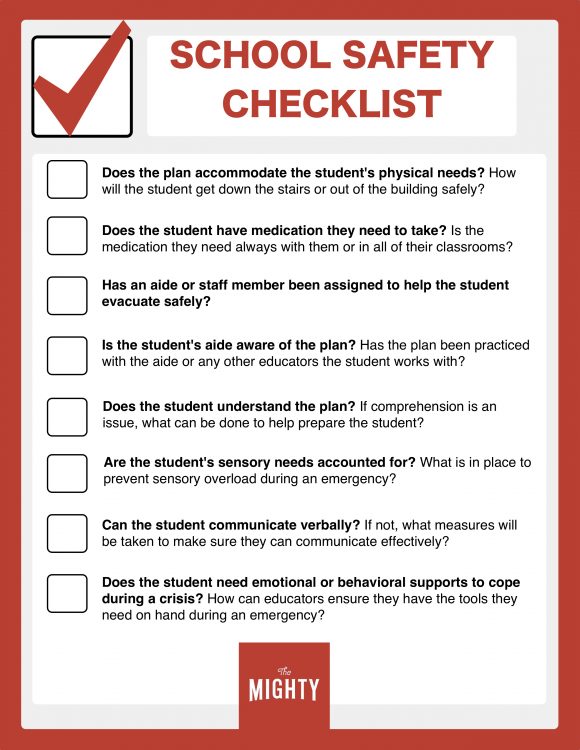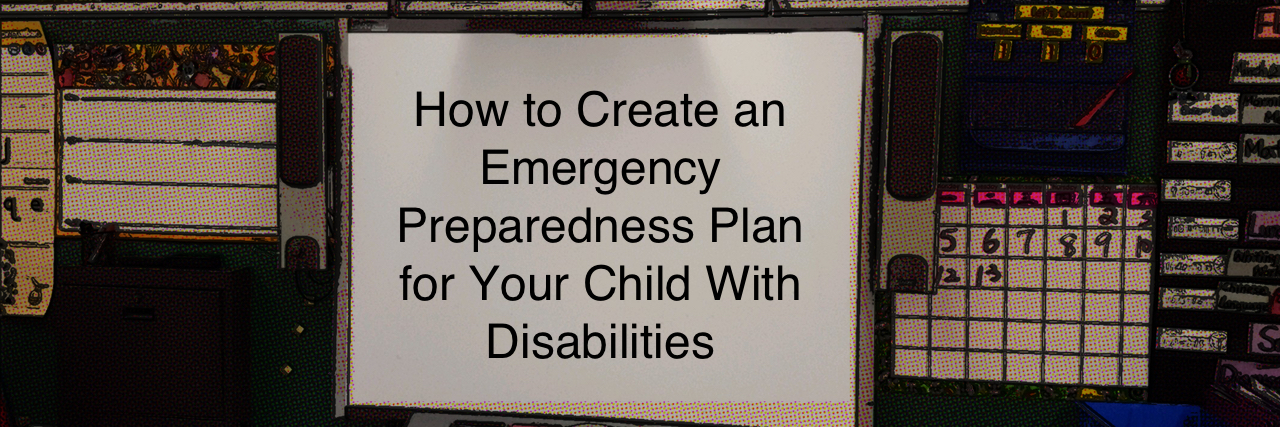How to Create an Emergency Preparedness Plan for Your Child With Disabilities
Editor's Note
Read The Mighty’s full investigation on how schools are not preparing students with disabilities for emergencies.
Schools use drills and safety protocols to keep students safe at school, but, as The Mighty found, a majority of students with disabilities feel these guidelines don’t do enough to protect them. Few federal recommendations exist to keep students with disabilities safe from active shooters, but there are ways to prepare students for these worst-case scenarios. One way you can do this is by adding individualized protocols to a student’s individualized education plan.
An IEP is a federal document that outlines what a student with a disability needs to be successful in school. It is unique to each student and is reviewed at least once a school year by a team which consists of the parents, teachers, other school staff and potentially the student. Special education teachers Laura Clarke, Ed.D., and Dusty Columbia Embury, Ed.D., noticed that, while an IEP helps a student be successful academically and socially, it is usually lacking how to help a student during an emergency like an active shooter situation.
This led them to develop the IELP, or individual emergency and lockdown plan. Much like an IEP, an IELP is tailored to the student’s individual needs and supports. The IELP can be attached to a student’s IEP or 504 plan, which is similar to an IEP but for students who do not necessarily need specialized instruction but require additional supports to receive an education similar to the general student population.
IELPs are a collaborative effort between parents, teachers, students (if they’re old enough) and possibly the school nurse or counselor depending on the needs of the student. Columbia Embury said when administrators and the district review safety and preparedness plans for the school as a whole, they should be talking to the parents of students with disabilities to help protect their children.
A child’s IELP should include everything they need to stay safe during a drill or crisis situation. Students with intellectual disabilities may need to practice drills more than the general school population, who typically perform two drills per year. Practice should also be held in diverse locations — classroom, gym, cafeteria, etc. — if it is hard for the student to take what they learned in one setting and apply it in another.
If a student needs access to medication throughout the day, it may be best to keep it in the classroom or with them instead of only in the nurse’s office because lockdowns can last for hours. If a student is on the autism spectrum and tends to become vocal during stressful times, an IELP could include supports such as sensory items to help keep the student calm.
“Everybody can’t always know the right thing to do all the time, but that’s why we have so many resources, and our biggest resources that are often overlooked are the parents and caregivers of these students,” Columbia Embury said. “They have a tremendous amount of experience and knowledge because they’ve had to learn from the time that they got a diagnosis or before all the way through school. They’ve had to advocate for their students the whole time, so they have a pretty good sense of what they need.”
To help parents and students develop an IELP or preparedness plan, The Mighty has included a list of questions and considerations to use during their next IEP meeting. The information is adapted from Clarke and Columbia Embury’s “Teaching Exceptional Students” article, which provides a checklist for teachers and a sample IELP.

After answering these question during your IEP meeting, you and the other members of the IEP team should decide how best to meet these needs. This could include an “emergency kit” the student carries with them during the school day or leaves with their aide/teacher. It could include sensory items, medications, communication aids or devices, etc.
Once an IELP is developed, it is a good idea to inform emergency personnel such as law enforcement and first responders of the plan each year. Parents should also inform police of their child’s limitations, so if they can’t comply with protocol, they aren’t seen as a threat.

